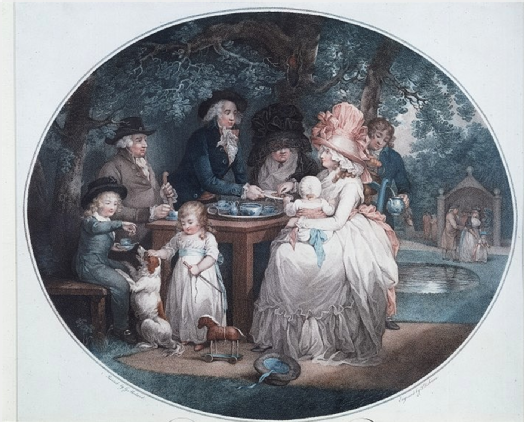East India Trade Objects and the Interior
This final session of the workshop looks at the impact East India objects made in the home, using inventories as evidence. This arena connects to a forthcoming 3-year project of Warwick University's History department, funded by the Leverhulme Trust and beginning in September 2011. 'The East India Company at Home, 1757-1857', a project lead by Margot Finn, aims to trace and assess the impact and significance of the flow of ‘Oriental’ commodities into British Georgian and Victorian country houses. It does so by combining the efforts of amateur and professional historians: a key component of the project is the integration of research (often empirically rich but incompletely contextualised) conducted by family and local historians with research framed by key questions about aesthetic change, identity formation, cultural geographies, patronage and power.
How did Asian luxuries shape and challenge British and sub-national identities of gender, self, family and place? Were Scottish, Welsh, English and British Oriental aesthetics, as manifested in the home, distinctive markers of global families’ regional affiliations? Did material practices associated with furnishing the country house strengthen or contradict stereotypes of the Orient that dominated print-based sources? Over time, how did the definition of what constituted ‘Asian’, ‘British’ and ‘European’ luxuries change, and what role did East India Company families play in that transformation?
By integrating our research findings into a web-portal to which local and family historians will also contribute, we hope to generate and harness new research findings from archives across the UK and abroad to address these domestic questions about 18th- and 19th-century global commerce.

In researching the trade in East India Company textiles, 1665-1730, which involves finished goods as well as unmade and related materials, I am addressing two central questions: 1) Does the consumption of East India needlework and printed cottons follow a broader pattern of the value and desire for luxury domestic furnishing textiles? 2) Is there a relationship between the decline of the Levant Company and the increase in the supply of East India raw materials in the textile trade?
Western and Eastern private collections and museums own several instances of pieces of furniture and various artefacts, today identified as the “East India Company Style”. The existing pieces, which testify of the European presence in the Indian Ocean at the Modern Period, are easily recognizable thanks to the mix of very normative Western styles with Asian species of wood or ivory and coral inlays.
The probate inventories of the French who died in the Pondicherry Trading Post, provide reliable information and make possible the study of the artefacts as objets d’art or museum pieces, as well as the wider study of their material and daily life environment. Indeed, the latter is essential to understanding the real function they play in the culture of the French in India, shared between preservation of European references, and opening interest in Asian culture. Therefore, the notion of exoticism is to be re-defined.
